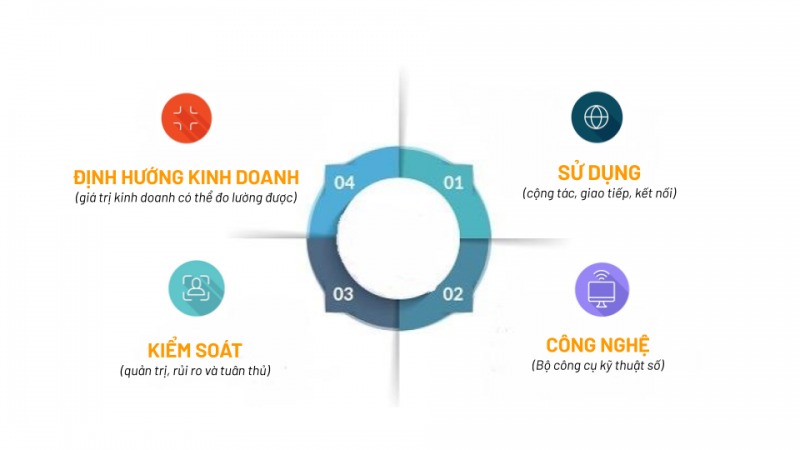Digital workplace will be the future of work when digital transformation takes place more and more strongly, business models change invariably when working in a digital environment is an inevitable choice. .

This is not only the choice of the business, but above all the staff themselves – who are working for hours in the company, they will choose for themselves an effective working school where there is collaboration, share, apply technology instead of doing it all by hand.
In fact, businesses today are using some components in the digital environment. But to really reap the benefits of digital workplace and have the results measurable, businesses need to implement it in its full form. That starts with understanding what a truly digital workplace is and how it can help businesses deliver measurable business value .
In the article below, let’s see to learn more about this concept.
What is Digital Workplace?
Digital workplace – Digital workplace is an enterprise strategy, including (1) tools (2) processes (3) culture and (4) skills that employees need to be equipped to work effectively. results as well as providing the best customer service.
Accordingly, the digital working environment allows:
- Team members interact effectively
- Manage projects and tasks with full information displayed
- Solve problems, ticket requests, errors quickly
- Automate standard and repeatable business processes
- Integration with third-party applications
- Automatically generate reports to make better data-driven decisions

Why choose a digital workplace strategy?
There are 4 reasons why businesses need to implement a digital workplace strategy, which are:
- To attract talent: 64% of employees would choose a lower paying job if they didn’t have to work in an office.
- Increased productivity: organizations with online social networks are 7% more productive than those without.
- Increase employee satisfaction: businesses that use internal social media software/tools show an average 20% increase in employee satisfaction.
- Talent retention: as employee engagement increases, employee retention rates also increase, up to 87%.
Thus, choosing to deploy a digital working environment will bring benefits to businesses, employees and customers. This is probably what any CEO wants.
Misunderstandings about digital workplace
Here are 3 common misunderstandings that people often misunderstand:
- Digital workplace is an intranet
An intranet is a private network that only authorized employees can access. And of course, you can’t use it for active internal projects, processes, or discussions. Meanwhile, the digital workplace allows businesses to securely store business data, manage projects, processes and interactions in real time.
- Digital workplace is just a collection of applications
You think that businesses that are using dozens of applications to manage their work are working in a digital environment. Not so, using many applications in the company, the more difficult it is for employees to manage their work, distributed data storage, difficult to find.
- Digital workplace is a collaboration tool
Collaboration apps allow users to interact in real time but are limited to communicating only. The digital workplace is not only a collaboration tool, but also helps streamline processes, track the status of projects, and automate repetitive tasks.
Digital workplace framework
According to Deloitte , the digital working environment will include 4 layers as follows:
- (1) Use: collaborate, communicate, connect
The digital workplace is an employee’s ability to do work by collaborating, communicating, and connecting with others. The goal is to forge productive business relationships within and beyond traditional workgroups and enable knowledge sharing across the enterprise.

- (2) Technology : Digital Toolkit
Every organization needs a digital toolkit at work with different tools, depending on the industry and business needs. It’s important to use the right tools for employees to help them perform better every day.
- (3) Controls: Governance, risk and compliance
The effectiveness of using technology in the digital workplace is underpinned by appropriate controls. That is, businesses need to have an appropriate governance structure and management process in a digital working environment. Comply with business policies and industry regulations.
- (4) Business orientation: Measurable business value
Summary
Business orientation is an important factor promoting the digital working environment. To achieve benefits, businesses need to give specific orientations for the digital working environment.




